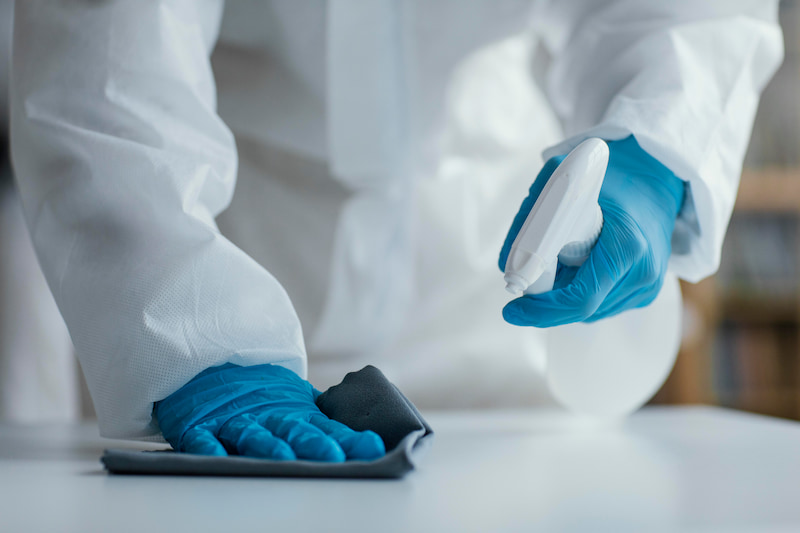
Maintaining a clean and safe clinic is much more than a matter of aesthetics; it is a necessity that directly impacts the health of patients and staff.
Discover at Weldon how to optimise the cleaning practices of your medical environment with these practical and effective tips.
8 Tips for impeccable clinic cleaning
1. Establishing clear and consistent protocols
The foundation of good cleaning practice begins with the establishment of clear protocols. It is vital that all staff understand the specific cleaning rules and procedures, including frequency, products to use and recommended techniques. These protocols must be aligned with the local and national regulations and must be revised regularly to ensure their effectiveness and relevance.
2. Use of appropriate products
The selection of disinfectants and cleaning products is crucial. These products must have the ability to effectively eliminate a wide range of micro-organisms and be approved by the health authorities. It is important to read labels thoroughly and follow the instructions for use to ensure their effectiveness and safety.
Moreover, in critical areas such as operating theatres or isolation rooms, it may be necessary to use products with characteristics such as broad-spectrum biocides.
3. Ongoing staff training
Training is not a one-off event, but an ongoing process. It is essential to ensure that staff are well informed on the latest developments in cleaning techniques and products.
In addition, this should not only include how to use the cleaning products and equipment correctly, but also how to handle and dispose of potentially hazardous material such as medical waste.
4. Attention to detail
In the cleaning of medical environments, details are crucial. Areas which often get overlooked, such as light switches, door handles and faucets, can be sources of contamination if not properly cleaned. It is vital that staff are trained to clean meticulously and check their work regularly.
5. Implementing high-level cleaning in critical areas
Areas that house immunocompromised patients or invasive procedures should receive special attention. In these spaces, cleaning must be done more frequently and meticulously, using sterilisation or high-level disinfection techniques. These practices must be supervised with rigorous monitoring in order to prevent any form of nosocomial infection.
6. Recording and monitoring
Keeping a detailed record of cleaning activities and the results of microbiological monitoring helps to identify areas of improvement and ensures consistent quality control. These records may be useful for internal auditing and for responding to regulatory requirements.
7. Encouraging a cleaning culture
Promoting a culture that values cleanliness as an integral part of healthcare can significantly improve staff participation in cleaning practices. Recognising and rewarding the efforts of the cleaning team can encourage greater commitment and diligence.
8. Adaptation and continuous improvement
The field of hygiene and disinfection is always evolving. It is crucial to keep up with the latest research and adapt protocols as necessary. This may include implementing new technologies, such as UV disinfection robots or advanced filtration systems, which can complement traditional cleaning practices.
Following these tips will not only help maintain a safe and sterile environment, but will also strengthen patients’ confidence in the quality of healthcare they receive.
Ensure a safe medial environment! Request a consultation with Weldon now.